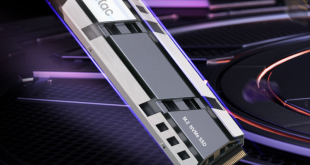AMD lovers had to wait months to get their hands on custom R9 290/X solutions, but their patience has been rewarded with a wealth of partner cards made available in 2014.
The Asus R9 290 Direct CU II OC is undoubtedly an excellent graphics card, able to power the latest games at 1600p and Ultra HD 4K resolutions. Frame rate prowess is almost identical to the Sapphire R9 290 Tri-X OC Edition … not a shocker considering they are running at the same 1,000mhz core clock. Sapphire have however overclocked their GDDR5 a little higher – to 1,300mhz, while Asus have settled for 1,260mhz, a miniscule 10mhz overclock on AMD's reference design.
The fastest R9 290 we have tested to this point comes from Gigabyte. Their R9 290 WindForce OC ships with an enhanced core clock of 1,040mhz, pushing frame rate performance a little ahead of the Asus and Sapphire solutions.
In previous years we have always rated the Asus Direct CU II cooler, but we now feel Asus are lagging behind the competiton. While Gigabyte and Sapphire have adopted high grade triple fan coolers, Asus have decided to stay true to their smaller dual fan layout.
Asus need to head back to the drawing board and release an upgraded triple fan Direct CU III version on upcoming models. The benefits of a good triple fan cooler are that each fan can spin slower with a greater combined air flow, simultaneously reducing noise levels.
Interestingly, the Direct CU II cooler on this specific card is equipped with 5 direct touch heatpipes, 2 of which actually don't make direct contact with AMD's Hawaii core. We have heard from several sources that this cooler has been adopted from the ASUS GTX780 range, which would explain the core contact size differences. You can see this on page 2 of our review today.
While we mentioned some high VRM temperatures on the thermal dynamics page of our review, we didn't experience any instability during testing, and we were able to overclock the core on this card by 10%, to 1,100mhz. We had to raise the default fan settings a little to help with cooling, but the Asus R9 290 Direct CU II OC did overclock to the same levels as both Sapphire and Gigabyte solutions. ASUS did explain the (supposed) high VRM temperatures and you can read this on the Thermal Dynamics page in this review.
Right now you can buy the Asus R9 290 Direct CU II OC from Overclockers UK for £389,99 inc vat. We would still choose the Sapphire R9 290 Tri-X Edition however, it is priced the same as the Asus board we reviewed today, and the Tri-X cooling system is markedly superior to the competing products from Gigabyte and ASUS.
You can discuss on our Facebook page, over HERE.
Pros:
- excellent performance.
- 10% overclocking headroom.
Cons:
- Sapphire Tri-X cooler is the market leader.
- A new triple fan design would help ASUS.
Kitguru says: We like the Asus R9 290 Direct CU II OC, but we do feel Sapphire and Gigabyte solutions offer more for the same money.

 KitGuru KitGuru.net – Tech News | Hardware News | Hardware Reviews | IOS | Mobile | Gaming | Graphics Cards
KitGuru KitGuru.net – Tech News | Hardware News | Hardware Reviews | IOS | Mobile | Gaming | Graphics Cards



Why would they move the VRM sensor to a place that is going to report hot results? surely thats an engineer foobar?
Sapphire rule the AMD roost, because they always do a proper design – and they don’t make nvidia boards either.
I read this review as ASUS cut corners, and have a cooler which isn’t quite at the same level as their competitors. I love their motherboards, but wonder about some of their design decisions once they move to other products.
So the VRM temp sensor doesn’t actually reflect the VRM’s true temperature.
The Cooler itself doesn’t fully cover the gpu (3 of 5 pipes at best it looked like?)
And they are using poorer quality Elpida memory modules, which are well known to be a source of the black screen crashes on the 290 series cards, over the far more stable Hynix modules that sapphire/gigabyte/msi use?
And all of this comes at a serious price premium (£529.99 on ocuk atm vs £439.99 for the gigabyte and £449.99 for the msi versions, which both offer better hardware).
How is this an 8/10 card? Closer to 4/10 surely given the poor decisions made and the price point compared to rival cards.
Not sure where you are getting the prices from, its £389.99 http://www.overclockers.co.uk/showproduct.php?prodid=GX-334-AS&groupid=701&catid=56&subcat=1752.
Unless you are looking at the 290x cards and getting mixed up.
My bad, you’re right there.
Nevertheless, the rest stands for all versions of the 290’s, and it still sits at a ~10% price premium vs other cards of its type, while still having the same hardware flaws. It’s just more pronounced with the X version.